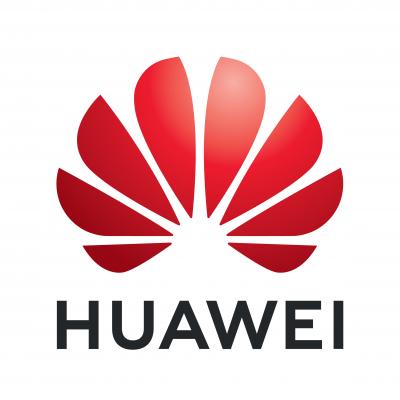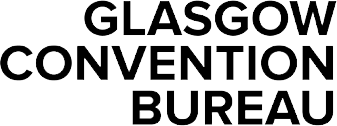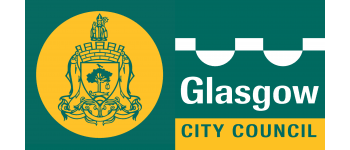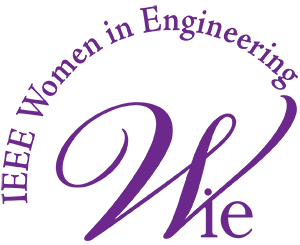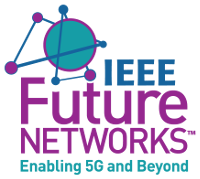List of Tutorials
TUT-01: Resource Management Using Deep Reinforcement Learning for 5G and Beyond Wireless Networks
TUT-02: Spectrum Usage and Occupancy Monitoring: Challenges and Software-Defined Radio Solutions (CANCELLED)
TUT-03: Towards Wi-Fi 8: From Extremely High Throughput to Ultra High Reliability
TUT-04: Multi-band Networks: Coexistence of RF, TeraHertz, and Optical Communications
TUT-05: Leveraging Full-Duplex MIMO Systems for Beyond 5G Simultaneous Transmit and Receive Applications
TUT-06: Digital Twins for Communications and Networking in 6G
TUT-07: Channel Measurements and Modeling Methods for 6G Wireless Communication Systems
TUT-08: On the Road to Quantum Communications
TUT-09: Internet-of-Space-Things: Advanced Global Connectivity for 6G
TUT-10: Beamforming Technologies for Ultra-Massive MIMO in Terahertz Communications
TUT-11: Enabling Global Intelligence with Low Earth Orbit (LEO) Satellite Constellations (WITHDRAWN)
TUT-12: Task-oriented Communications and Networks
TUTORIALS SCHEDULE
SUNDAY, 26 MARCH - 09:00 - 12:30
TUT-01: RESOURCE MANAGEMENT USING DEEP REINFORCEMENT LEARNING FOR 5G AND BEYOND WIRELESS NETWORKS
Room: Alsh 1
TUT-03: TOWARDS WI-FI 8: FROM EXTREMELY HIGH THROUGHPUT TO ULTRA HIGH RELIABILITY
Room: Boisdale 1
TUT-05: LEVERAGING FULL-DUPLEX MIMO SYSTEMS FOR BEYOND 5G SIMULTANEOUS TRANSMIT AND RECEIVE APPLICATIONS
Room: Carron 1
SUNDAY, 26 MARCH - 14:00 - 17:30
TUT-06: DIGITAL TWINS FOR COMMUNICATIONS AND NETWORKING IN 6G
Room: Alsh 1
TUT-07: CHANNEL MEASUREMENTS AND MODELING METHODS FOR 6G WIRELESS COMMUNICATION SYSTEMS
Room: Alsh 2
TUT-08: ON THE ROAD TO QUANTUM COMMUNICATIONS
Room: Boisdale 1
TUT-09: INTERNET-OF-SPACE-THINGS: ADVANCED GLOBAL CONNECTIVITY FOR 6G
Room: Boisdale 2
TUT-10: BEAMFORMING TECHNOLOGIES FOR ULTRA-MASSIVE MIMO IN TERAHERTZ COMMUNICATIONS
Room: Carron 1
MONDAY, 27 MARCH - 14:00 - 17:30
TUT-04: MULTI-BAND NETWORKS: COEXISTENCE OF RF, TERAHERTZ, AND OPTICAL COMMUNICATIONS
Room: M4 (Meeting Academy)
WEDNESDAY, 29 MARCH - 11:00 – 12:30 and 14:00 – 15:30
TUT-12: TASK-ORIENTED COMMUNICATIONS AND NETWORKS
Room: Dochart 2
Tutorial Slides
Those registered for tutorials will receive a password to access the tutorial slides via email from our registrar. Please use this to log on the tutorial slides page. Please note we only post slides that have been provided to us from the tutorial speakers.
Click here to view log in.
TUT-01: Resource Management Using Deep Reinforcement Learning for 5G and Beyond Wireless Networks
(Sunday, 26 March, 09:00 BST)
Room: Alsh 1
Abstract:
Future wireless networks are expected to be extremely complex due to their massive heterogeneity in terms of the types of network architectures they integrate, types of emerging applications and services they support, and types and numbers of smart IoT devices they serve. To elaborate, future networks will integrate different radio access technologies (RATs) in the licensed and unlicensed bands across the land, sea, air, and space into a single network in order to ensure high hyper-connectivity, reliability, and coverage. Such networks are expected to support vertical disruptive applications in different sectors, including extended reality, holographic projection, autonomous systems, and connected healthcare diagnostics. Meanwhile, emerging devices, such as smartphones/tablets and IoT devices, are expected to exceed 30 billion by 2023 and are increasingly being equipped with advanced signal processing capabilities that enable them to support simultaneous multi-connectivity to these multi-RATs in order to support future applications and services. Unfortunately, radio resource management (RRM) in such large-scale and heterogeneous networks (HetNets) becomes one of the major challenges encountered during system design and deployment. In this tutorial, we discuss in depth the frontier of deep reinforcement learning (DRL) for radio RRM in future wireless HetNets. Towards this goal, we first discuss the conventional methods used for RRAM and demonstrate their inadequacies. Then, we explain the most widely used DRL algorithms to address the issue of RRAM in future HetNets, along with some examples. Finally, we highlight important open challenges and provide insights into several future research directions in the context of DRL-based RRAM.
Speakers:
Abdulmalik Alwarafy, United Arab Emirates University, United Arab Emirates
Mohamed M. Abdallah, Hamad Bin Khalifa University (HBKU), Qatar
Ala Al-Fuqaha, Hamad Bin Khalifa University, Qatar
Bekir S. Çiftler, Hamad Bin Khalifa University (HBKU), Qatar
TUT-03: Towards Wi-Fi 8: From Extremely High Throughput to Ultra High Reliability
(Sunday, 26 March, 09:00 BST)
Room: Boisdale 1
Abstract:
What will Wi-Fi be in 2030? As hordes of data-hungry devices challenge its current capabilities, the IEEE strikes again with 802.11be-alias Wi-Fi 7-while also paving the way for its successor: Wi-Fi 8. These brand-new amendments promise a (r)evolution of unlicensed wireless connectivity as we know it, unlocking access to gigabit, reliable and low-latency communications, and reinventing manufacturing and social interaction through digital augmentation. With the development of Wi-Fi 7 underway and the standardization of Wi-Fi 8 about to kick off, we will shed light from both an industrial and an academical perspective on the must-have features to make unlicensed wireless the new wired.
Speakers:
Lorenzo Galati Giordano, Nokia Bell Labs, Germany
Giovanni Geraci, Universitat Pompeu Fabra, Spain
Boris Bellalta, Universitat Pompeu Fabra, Spain
TUT-04: Multi-band Networks: Coexistence of RF, TeraHertz, and Optical Communications
(Monday, 27 March, 14:00 BST)
Room: M4 - Meeting Academy
Abstract:
To date, wireless technology has been developed primarily to broadcast data over radio frequency (RF) or sub-6GHz spectrum. However, the finite number of licensed RF bands cannot keep up with the future massive connectivity requirements. Extremely high frequencies (optical, mm-wave and Terahertz) [EHF] offer much wider transmission bandwidths with extreme data rates (in the order of multi-Gbps). Nevertheless, EHF transmissions are susceptible to severe path-loss attenuation resulting in smaller coverage zones and frequent switching among access points if a user is moving. Also, the EHF propagation characteristics vary significantly in different layers of the atmosphere due to diffraction, scattering, molecular absorption, etc. Subsequently, there is no one-size-fits all spectrum solution for a variety of emerging wireless applications and all frequencies are expected to co-exist in a future wireless network. It is thus critical for the community to understand the unique differences between conventional RF, visible light communications, free space optical, mm-wave, and THz in terms of their transceiver design, channel propagation characteristics, mobility and resource management, and optimization of unique transceiver parameters.
The tutorial will cover channel propagation modeling aspects in optical and THz transmissions, provide a vision of multi-band network architecture, and path forward for resource management and mobility management in 6G. In addition, most of the existing resource management solutions are not fast and scalable which is critical for EHF networks due to the extremely short time of channel variations. As such, the tutorial will also highlight the role of machine learning in developing robust and scalable algorithms for network planning and resource management.
Speakers:
Hina Tabassum, York University, Canada
Hong-Chuan Yang, University of Victoria, Canada
Mohamed-Slim Alouini, King Abdullah University of Science and Technology, Saudia Arabia
TUT-05: Leveraging Full-Duplex MIMO Systems for Beyond 5G Simultaneous Transmit and Receive Applications
(Sunday, 26 March, 09:00 BST)
Room: Carron 1
Abstract:
This tutorial focuses on the latest advances in the full duplex Multiple-Input Multiple-Output (MIMO) technology, detailing its enabling features for beyond 5G wireless systems and overviewing the available hardware prototypes. The evolution of full duplex radios, from their initial proof of concept till their recent partial consideration in 3GPP Release 17 via the integrated access and backhaul paradigm, will be discussed together with the various emerging simultaneous transmit and receive applications, which can boost the physical-layer performance, while enabling channel sensing and localization. The key architectural components of the latest Full Duplex (FD) MIMO systems, their underlying mixed analog and digital optimization approaches, and their recent applications for simultaneous data communication and channel estimation, direction-aided beam alignment and localization, and integrated sensing and communication will be presented. Moreover, the latest considerations of FD MIMO radios with metasurface-based antenna panels, wideband channels, machine learning, and up to THz frequencies will be overviewed. The tutorial will be concluded with a detailed discussion on novel perspectives and future directions for FD MIMO radios in 6G wireless systems.
Speakers:
Kenneth E. Kolodziej, MIT Lincoln Laboratory, USA
George C. Alexandropoulos, University of Athens, Greece
TUT-06: Digital Twins for Communications and Networking in 6G
(Sunday, 26 March, 14:00 BST)
Room: Alsh 1
Abstract:
6G has ambitious KPIs that are defined to satisfy the requirements of its driving applications such as connected robotics and autonomous systems, immersive experience of augmented reality (AR)/virtual reality (VR)/mixed reality (MR), and blockchain and trust technologies. 6G KPIs and driving applications enable a comprehensive digital representation of the physical world, along with the creation and the support for real-time interaction. In this environment, the cyber and cyber-physical worlds are connected, and digital twins (DTs) of various objects can be created. DT is a real-time evolving digital duplicate of a physical object or even a process that contains all its history. DT is enabled by massive real-time multi-source data collection and its analysis. Therefore, on a larger scale we can say that it is a crossing point of 6G and AI. While 6G is considered as an enabler of DT, we believe that DT can be a facilitator for integrating AI and 6G, towards the desired KPIs. The wide and universal potential applications of DT, ranging from aerospace to Industry 4.0, and its high communication requirements will make it the killer application of 6G.
Speakers:
Hamed Ahmadi, University of York, United Kingdom
Trung Q. Duong, Queen's University Belfast, United Kingdom
Berk Canberk, Edinburgh Napier University, United Kingdom
TUT-07: Channel Measurements and Modeling Methods for 6G Wireless Communication Systems
(Sunday, 26 March, 14:00 BST)
Room: Alsh 2
Abstract:
For the design, performance evaluation, and optimization of wireless communication systems, channel measurements and realistic channel models with good accuracy-complexity-pervasiveness trade-off are indispensable. The proposed tutorial is intended to offer a comprehensive and in-depth course to communication professionals/academics, aiming to address recent advances and future challenges on channel measurements and modeling methods for sixth generation (6G) wireless systems. Network architecture and key technologies for 6G that will enable global coverage, all spectra, and full applications will be first discussed. Channel measurements and non-predictive channel models are then reviewed for challenging 6G scenarios and frequency bands, focusing on millimeter wave, terahertz, and optical wireless communication channels under all spectra, satellite, unmanned aerial vehicle, and maritime communication channels under global coverage scenarios, and vehicle-to-vehicle, ultra-massive multiple-input multiple-output (MIMO), industrial Internet of things (IoT), reconfigurable intelligent surface (RIS), and integrated sensing and communication (ISAC) channels under full application scenarios. New beam domain channel models and artificial intelligence (AI)/machine learning (ML) based space-time-frequency domain predictive channel models will also be investigated. A non-predictive 6G pervasive channel model for all frequency bands and all scenarios will then be proposed, which is expected to serve as a baseline for future standardized 6G channel models. Future research challenges and trends for 6G channel measurements and models will be discussed in the end of the tutorial.
Speakers:
Cheng-Xiang Wang, Southeast University & Purple Mountain Laboratories, China
Jie Huang, Southeast University, China
Chen Huang, Purple Mountain Laboratories & Southeast University & Beijing Jiaotong University, China
Haiming Wang, Southeast University & Purple Mountain Laboratories, China
Harald Haas, The University of Strathclyde, United Kingdom
TUT-08: On the Road to Quantum Communications
(Sunday, 26 March, 14:00 BST)
Room: Boisdale 1
Abstract:
Moore's laws has indeed prevailed since he outlined his empirical rule-of-thumb in 1965, but based on this trend the scale of integration is set to depart from classical physics, entering nano-scale integration, where the postulates of quantum physics have to be obeyed. The quest for quantum-domain communication solutions was inspired by Feynman's revolutionary idea in 1985: particles such as photons or electrons might be relied upon for encoding, processing and delivering information. Hence in the light of these trends it is extremely timely to build an interdisciplinary momentum in the area of quantum communications, where there is an abundance of open problems for a broad community to solve collaboratively.
Speaker:
Lajos Hanzo, University of Southampton, United Kingdom
TUT-09: Internet-of-Space-Things: Advanced Global Connectivity for 6G
(Sunday, 26 March, 14:00 BST)
Room: Boisdale 2
Abstract:
The sixth generation (6G)-envisioned internet-of-space-things (IoST) will provide a key paradigm for communications and networking. The evolving circuit techniques, modern signal processing methods, edge and cloud computing, satellite doppler-effect exploitation, use of reconfigurable intelligent surfaces (RIS), wireless backhaul, automated unmanned aerial vehicle (UAVs) and other flying platforms, interference management and coverage hole detection, have drastically changed current realization of the space, sky and terrestrial communication systems and networks. For instance, some of the most recent studies reveal that the wireless framework can be reliably established over the Low Earth Orbit (LEO) satellites. Another research direction which has attracted wide attention is UAVs-assisted wireless communications, especially in the emergent and on-demand situations, and RIS-assisted global coverage for LEO satellites. This tutorial presents comprehensive overview of emerging IoST wireless networking including fundamentals, requirements and emerging problem design concepts. This tutorial will introduce the evolved concept of the IoST implementing edge and cloud computing, RIS-aided systems, UAVs, LEO satellites, multiple access schemes and their use cases for 6G networks such as provision of fronthaul/backhaul and access networks leading towards the development of exciting new vertical frameworks.
Speakers:
Aryan Kaushik, University of Sussex, United Kingdom
Muhammad Zeeshan Shakir, University of the West of Scotland, United Kingdom
Wonjae Shin, Ajou University, South Korea
Rong Ke Liu, Beihang University, China
TUT-10: Beamforming Technologies for Ultra-Massive MIMO in Terahertz Communications
(Sunday, 26 March, 14:00 BST)
Room: Carron 1
Abstract:
Terahertz (THz) communications are envisioned as an enabling and highly promising wireless technology for the sixth generation (6G) and beyond wireless systems, which aim to provide full and unlimited wireless connectivity for the ubiquitous intelligent information society of 2030 and beyond. To overcome the short transmission distance and huge propagation loss, ultra-massive (UM) MIMO systems with beamforming technologies that employ sub-millimeter wavelength antenna arrays are essential to enable an enticingly high array gain. In UM-MIMO systems, hybrid beamforming stands out for its great potential in promisingly high data rate and reduced power consumption. Against this background, the proposed tutorial will provide a comprehensive look at cutting-edge beamforming technologies in THz UM-MIMO communications. The proposed tutorial will help a wide range of audience across the academic, industry, and professional communities to thoroughly understand the role of THz communications in 6G and beyond era and unlock its potential for the future ubiquitous intelligent information society.
Speakers:
Zhi Chen, University of Electronic Science and Technology of China, China
Linglong Dai, Tsinghua University, China
Chong Han, Shanghai Jiao Tong University, China
TUT-12: Task-oriented Communications and Networks
(Wednesday, 29 March, 11:00 – 12:30 and 14:00 – 15:30 BST)
Room: Dochart 2
Abstract:
Metaverse is a digital world that will revolutionize the interactions among humans, machines and environments by providing a shared, unified, perpetual, and inter-operable realm for participants from all over the world. This ambitious vision brings significant challenges to the development of next-generation information and communication technology (ICT) infrastructure and raises the following essential questions:
- Are the existing infrastructures sufficient for Metaverse?
- How to guarantee the Key Performance Indicators (KPIs) of diverse applications?
- What are the issues with the existing design approaches and what new design methodologies are needed?
In this tutorial, we will address those fundamental questions and discuss the challenges and potential solutions of future communication systems. We will focus on task-oriented, semantics-aware communications and cover the design principle, framework, mathematical tools, examples and demonstrations.
Speakers:
Yansha Deng, King’s College London, United Kingdom
Nikolaos Pappas, Linköping University, Sweden
Guodong Zhao, University of Glasgow, UK
Changyang She, University of Sydney, Australia



